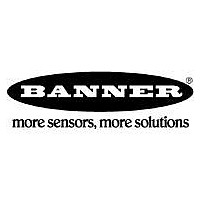AT-FM-2A BANNER ENGINEERING, AT-FM-2A Datasheet - Page 5

AT-FM-2A
Manufacturer Part Number
AT-FM-2A
Description
Relay; E-Mech; Sfty; Cur-Rtg 4A; Ctrl-V 115/230 AC, 24 DC; Vol-Rtg 250AC/DC
Manufacturer
BANNER ENGINEERING
Datasheet
1.AT-FM-2A.pdf
(12 pages)
Specifications of AT-FM-2A
Brand/series
Duo-Touch
Current, Rating
4 A
Function
Safety
Mounting Type
DIN Rail
Power, Rating
1000⁄200 VA⁄W
Relay Type
Electro Mechanical
Voltage, Control
173 VAC
Voltage, Rating
250 VAC/VDC
Coil Voltage Vac Nom
24V
Coil Voltage Vdc Nom
24V
Contact Current Max
4A
Contact Voltage Ac Nom
250V
Contact Voltage Dc Nom
250V
Contact Configuration
SPST-NO
No. Of Poles
1
Lead Free Status / Rohs Status
RoHS Exempt Product
Figure 3. Protect activation devices in order
Total protection for the two-hand control
system from “defeat” is not possible.
However, regulations require the user
to arrange and protect hand controls to
minimize possibility of defeat or accidental
actuation.
hand controls are installed must not
adversely affect the means of actuation.
Severe contamination or other
environmental influences may cause
slow response or false ON conditions of
mechanical or ergonomic buttons. This
may result in exposure to a hazard.
Field Covers
1,100 mm (43.3")*
1,100 mm (43.3")*
*Minimum clearance,
Top Plate Shield
Banner Engineering Corp.
per EN 574:1996 Chapter 8.5
www.bannerengineering.com • Tel: 763.544.3164
!
!
to prevent defeat or inadvertent
actuation
CAUTION ...
Controls
The environment in which
CAUTION ...
Hand Controls to Prevent
Accidental Actuation
•
Minneapolis, MN U.S.A.
Side Mount
Top Mount
Hand
Install
DUO-TOUCH
Installation of Hand Controls
Each actuating device requires a normally open (e.g., SPST) hard contact capable of
reliably conducting 20mA at 12V dc. For solid-state operation, model OTBVN6.. and
OTBVP6.. touch buttons must be used to ensure proper functionality.
Standards require that the actuating devices be mounted to protect them from
accidental or unintentional operation. Use shields, covers, rings, collars, dividers, or
similar protection to prevent accidental switch actuation and to discourage use of
forearms or elbows. European standard ISO13851 includes a detailed discussion of
approaches to protection of hand controls.
The hand controls must be arranged far enough apart so that the operator cannot
operate both hand controls by the use of one arm (typically, not less than
550 mm/21.7" in a straight line, per ISO13851).
Figure 3 shows two examples for mounting Banner’s OTB Touch Buttons. When
mounted on top of the control bar, the protective field covers should be in place,
as shown. For added protection, mount the devices sideways under and behind a
protective hood, rather than on top of the bar, leaving the field covers off. This side
mount reduces the possibility of the operator easily positioning and leaving an object
in the path of the beam, intentionally bypassing the safeguard.
The hand controls must be arranged far enough apart so that the operator cannot
operate both hand controls using only one hand. Typically, this distance is not less
than 550 mm (21.7"), but using guards or an alternate mounting arrangement can
allow a shorter distance, per ISO13851 (EN574). This standard also recommends that
the hand control be arranged on a horizontal (or nearly horizontal) surface that is not
less than 1,100 mm (43.3") above the floor.
Employ ergonomic principles to avoid unnecessary fatigue in the use of the hand
controls. See ISO13851 (EN574) Two-Hand Control, ANSI B11.TR1–Ergonomic
Guidelines, and EN894–Safety of Machinery–Ergonomic Requirements–Control
Actuators for further information.
Requirements for Multiple-Operator Control
Standards have specified several conditions for situations where multiple operators
work together to control one machine:
• Each operator must actuate his/her own pair of actuating devices, with all pairs of
• The actuators all must be released between cycles.
• The actuation and de-actuation of all workstations requiring two-hand control must
• The clutch/brake control system must be designed so that the clutch cannot be
It is the responsibility of the user to determine if this two-hand control system can be
interfaced to the machine in a manner to satisfy all existing requirements for multiple-
operator control.
actuators active at one time, in order to initiate a machine cycle; the machine may
not be allowed to operate until this condition is true.
be supervisable and must provide indication.
actuated if all the operating workstations are bypassed.
®
– Models AT-..M-2A Two-Hand Control Modules
P/N 47550 rev. E
5













